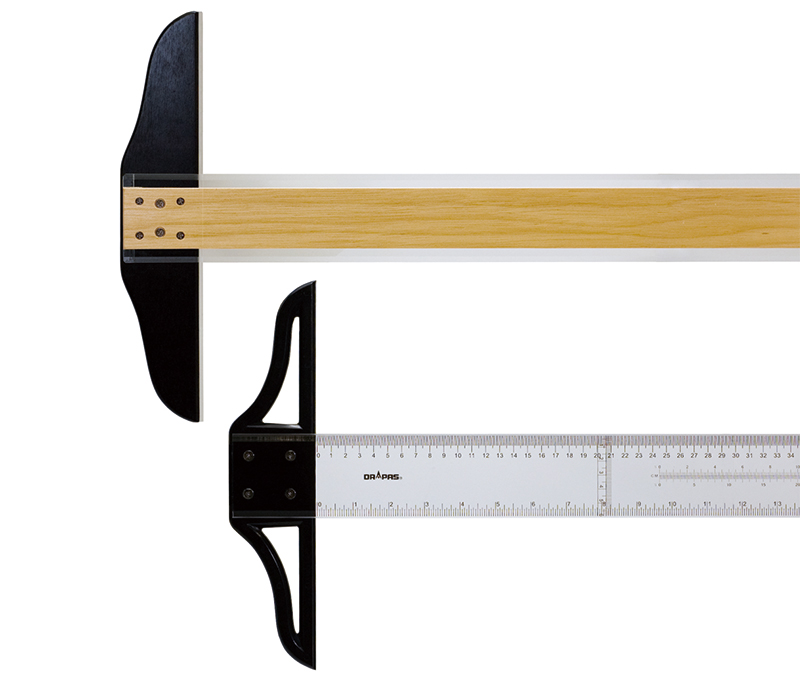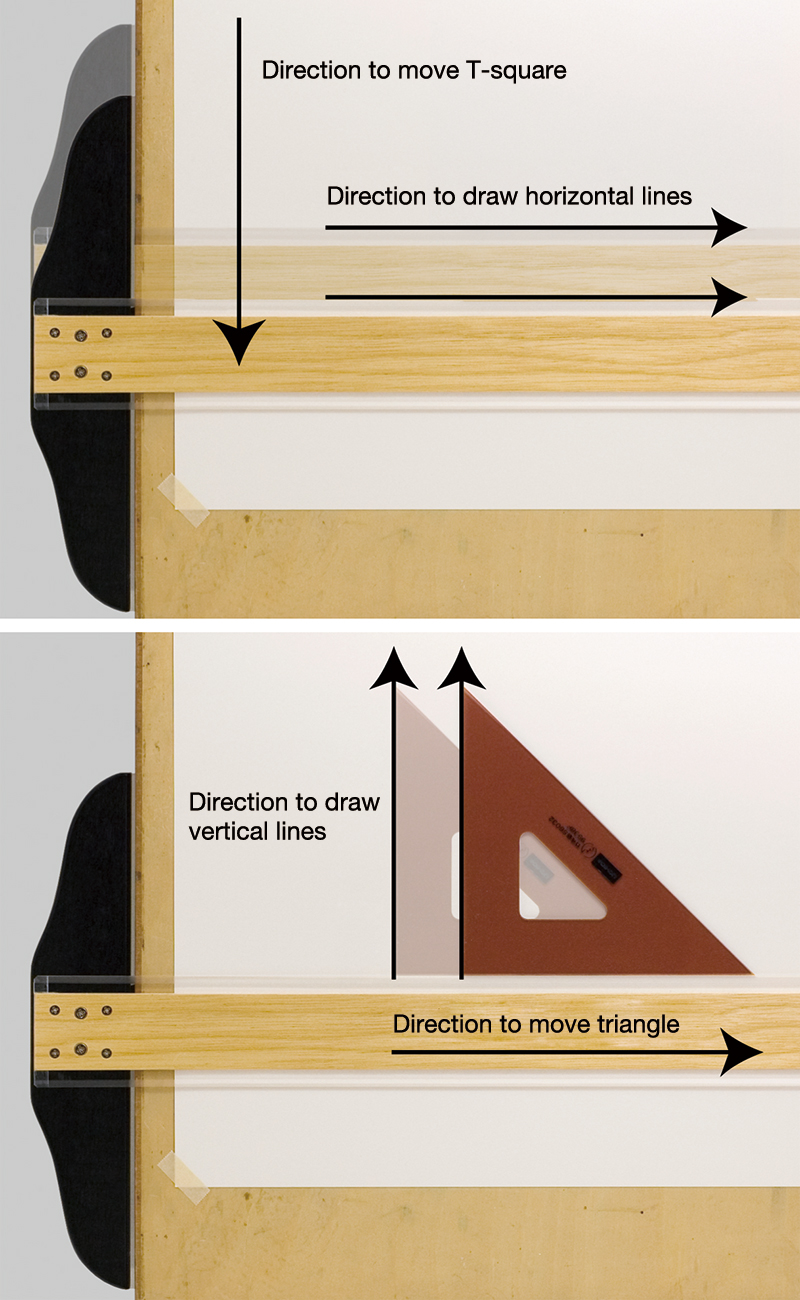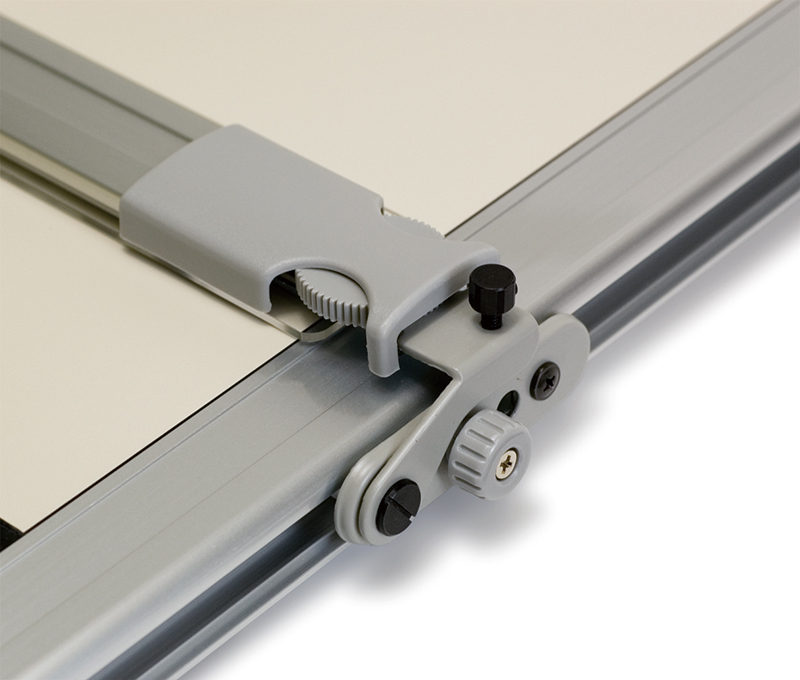T-Squares
T定規
T-jōgi
CATEGORIES
A T-square (T-shaped ruler) is a tool used in hand-drawing such things as architectural drawings. As the name suggests, a T-square is shaped like the letter T. The shorter piece at the top (the head) and the longer piece that makes up the body (the blade) are connected at a ninety-degree angle. The blade is used for drawing straight lines. T-squares are made of either wood or acrylic plastic, and most are between 45cm and 105cm in length.
Because T-squares are usually used in conjunction with a drafting board, one should choose a T-square whose length is appropriate to the board and the paper to be used. The head of the T-square hooks on to the left side of the drafting board, and can be slid up and down along that edge. The blade is used to draw horizontal straight lines. When drawing lines, one should hold the T-square in place using your non-drawing hand. In order to draw vertical or diagonal lines, a triangular ruler (set square) is used in conjunction with the T-square. Holding the T-square down, one places the triangle on the top edge of the blade. So that the resulting line is uniform in thickness and not jagged, the line should be drawn in one direction only. When drawing a line with a T-square or triangle, horizontal lines are usually be drawn left to right, and vertical lines from bottom to top. Similarly, upward-sloping diagonal lines are usually drawn from bottom left to top right, and downward-sloping diagonal lines from top left to bottom right. One should avoid attempting to re-draw a line a second time. When moving a ruler from a drawn line, it should be from top to bottom, so as not to rub the ruler over the line. In the case of triangles the direction of movement will depend on the line drawn, but in most cases it should be moved from left to right.
There is another type of ruler, a parallel ruler, that performs a similar function to the T-square. The two ends of the scale (the portion that corresponds to the blade of the T-square) are fixed to either edge of the drafting board, and then it is moved up and down to draw parallel lines. One is able to avoid imprecise lines through the use of adjustment screws, which make it unnecessary to hold the scale down as one would a T-square.
Because a T-square would be rendered useless were it to warp, care should be given when transporting or storing one. T-squares and parallel rulers can be found at stores that handle drafting equipment and art supply stores.
RELATED PAGES

- How to draw horizontal and vertical lines

 Parallel ruler
Parallel ruler Parallel ruler with scale fixed to drafting board
Parallel ruler with scale fixed to drafting board
